Recent Articles
Popular Makes
Body Types
2018 Mitsubishi Outlander Plug-in Hybrid Road Test and Review
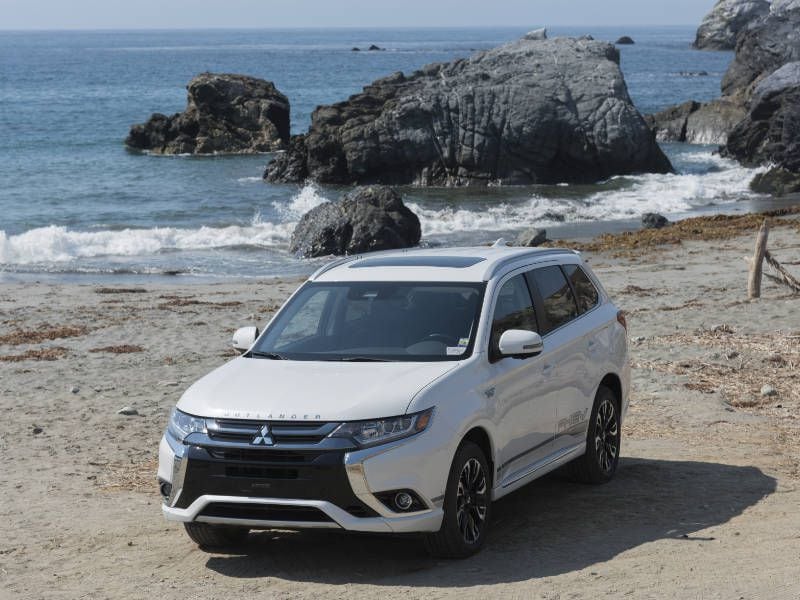
2018 Mitsubishi Outlander PHEV hero ・ Photo by Mitsubishi
Driving a new Mitsubishi vehicle — like the 2018 Outlander PHEV, a plug-in hybrid crossover — carries a dual burden for a reviewer. First and foremost, you have to evaluate the SUV with an objective eye, discovering the good and bad as you see it. But at the same time, you have to consider the company itself based on what you observe in the marketplace and what the company tells you in its press briefings, interviews and materials. You owe it to your readers to be fair, objective and curious. You also must acknowledge strengths and weaknesses, as they might affect the buying decision. The first part, the product part, is pretty easy on this one. The Outlander PHEV is very good and has a lot to recommend it. The second — the business part — is a little tougher, but still pretty good. Mitsubishi has been through some tough times and seems committed to smart solutions. Where does that leave the buying decision? Let’s start with the product.
Exterior and Interior Design
The new PHEV (plug-in hybrid electric vehicle) version of the Outlander uses pretty much the same exterior and interior design as the gas-only crossover version, which got its last makeover for 2016. The Outlander has an attractive, if unremarkable, tall wagon shape. Mitsubishi does a good job with fit and finish, with deep paintwork, rich chrome trim, and even gaps and seams. The PHEV gets a unique front and rear fascia, some subtle PHEV badging and 18-inch two-tone aluminum alloy wheels. LED lighting is standard in the rear, and standard on the upper trim level in the front.
Inside is a similar story, with a nicely laid out dashboard, center stack and center console. The gear selector is in the center console on the left, with a minimum of buttons and switches to avoid clutter. An electronic parking brake switch conserves space. Some less-than-premium materials find their way to the door panel, which lets the interior down a little, but overall, it’s a comfortable, classy space.
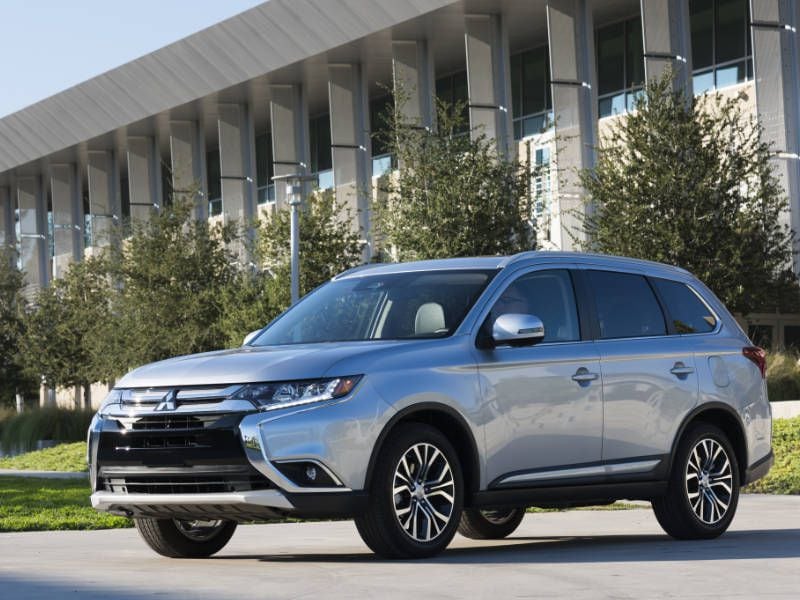
Photo by Mitsubishi
Powertrain
This is where the real excitement starts. Outlander PHEV is the first plug-in hybrid in its compact crossover class, class, and it comes standard with all-wheel drive. This feat was achieved with a wealth of engineering. A 12-kWh lithium-ion battery pack is mounted at the bottom of the car, powering twin electric motors (one front, one rear). A 2.0-liter four-cylinder gasoline engine lives under the hood. Depending on the drive mode, the gasoline engine acts as either a generator or an engine, sending power to the front wheels. The combined system horsepower is estimated at 197. Accessing drive modes is a little fiddly. You have to pull the center console lever over to the left, then pull back for D or all the way back for B, or push forward for R. P is engaged by pushing a button ahead of the lever. It’s not intuitive, though more time behind the wheel would make the operation more familiar.
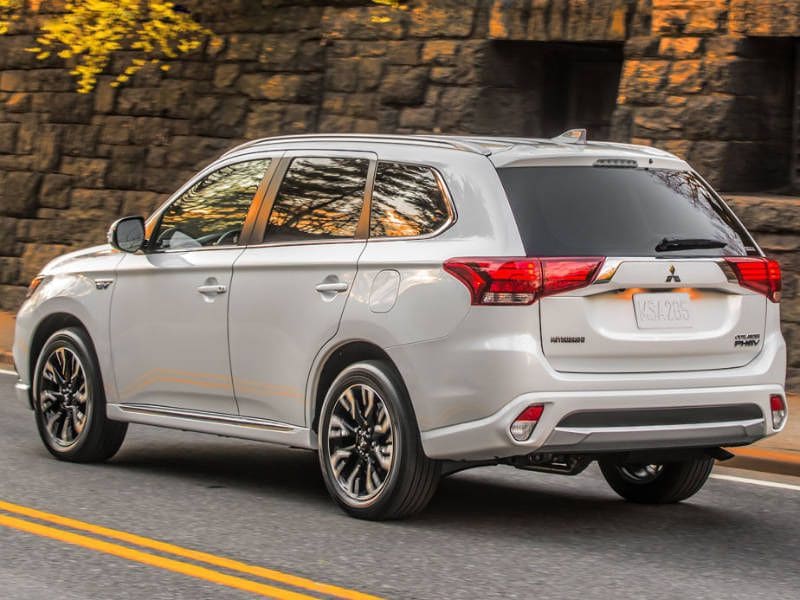
Photo by Mitsubishi
Regenerative Braking
Like all current hybrid systems, the Outlander captures energy during braking to help recharge the electric batteries. Outlander offers drivers the option of six levels of regeneration, selectable with paddle shifters behind the steering wheel. You can toggle up and down the regenerative ladder, applying braking force without touching the floor brake pedal. It’s an effective way to control regeneration, and a different way of driving. While not as complete a change as the all-electric Chevrolet Bolt’s one-pedal system, Mitsubishi’s approach to the equation is smart and involving without being overly complicated.
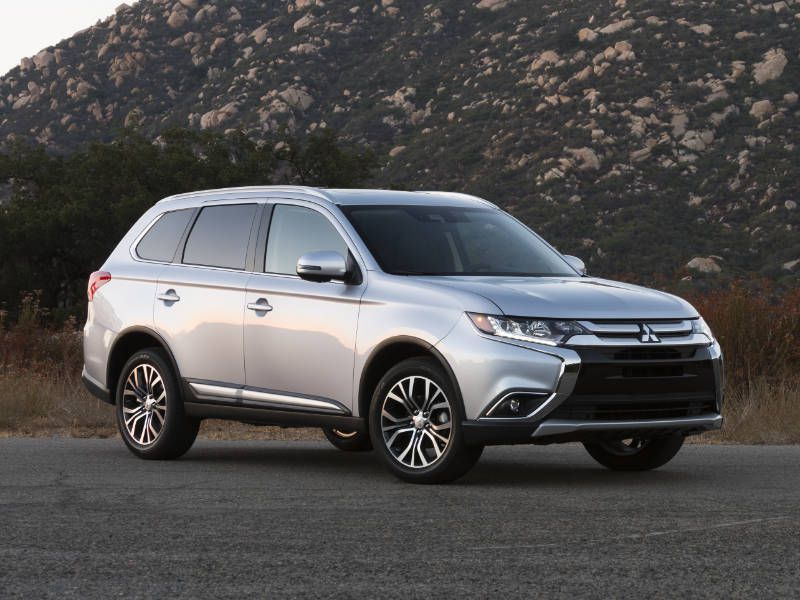
Photo by Mitsubishi
Super All-Wheel Control
Beyond being a PHEV, Outlander’s call for attention is its all-wheel drive system, Super All-Wheel Control (S-AWC). S-AWC is a “specialized application derived application of Lancer Evolution-derived S-AWC,” according to Mitsubishi. That may be some word salad to tie the PHEV to one of Mitsubishi’s most successful performance cars, because unlike the gasoline-powered Evo, the PHEV uses its separate electric motors to drive the front and rear wheels, while the Evo used differentials to achieve its control.
No matter — the fact is the PHEV has the ability to send power to the wheels that need it, shifting drive from front to rear, side to side to deliver grip and control. The effect is called torque vectoring, and it makes for sharper cornering and a greater feeling of stability.
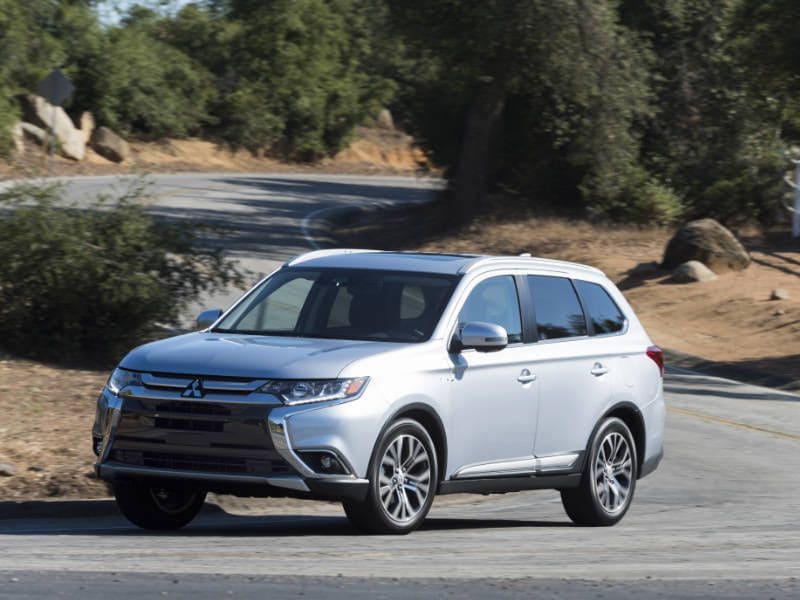
Photo by Mitsubishi
Charging and Using Power
Outlander PHEV can be charged a number of ways. You can plug it into a standard 110-volt home outlet using the supplied, switchable 8-amp/12-amp charging cord. You can instead use a 220-volt outlet for faster charging, and DC fast-charging capability is standard. A full charge (from empty) can be achieved with household power in about eight hours; half that at 220-volts and half again with DC fast charging. Electric-only range has not been officially determined yet, but Mitsubishi hinted that it would be best-in-class; other plug-in hybrid crossovers are rated for less than 20 miles of all-electric range before their gas engines need to kick in. A clever feature is a built-in 110-volt outlet in the cargo hold and one in the passenger compartment. You can plug in to your plug-in to power a laptop, a lamp, a small appliance or whatever you require up to 1500 watts. Mitsubishi demonstrated this capability by setting up an Outlander as a smoothie station during our test drive. Yum.
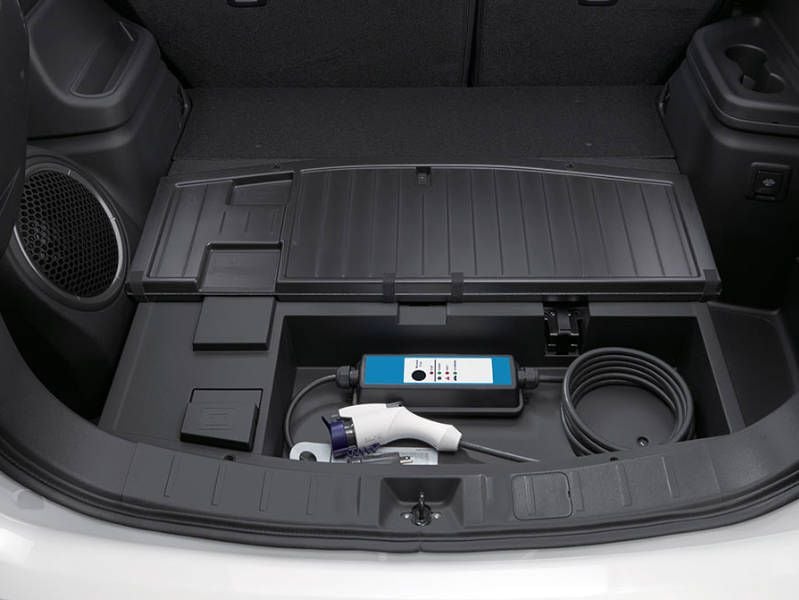
Photo by Mitsubishi
Handling
Our test drive was performed in a very unusual location: Catalina Island, 27 miles across the sea from Long Beach Harbor in Los Angeles. The little island has very few inhabitants, and very few vehicles and roads. Speed limits are never over 35 mph, and often much lower. We spent most of our time on dirt roads, and little on pavement during several hours of driving, so a traditional test drive was not practical.
Still, it was possible to get a good feel for the regenerative braking performance, torque vectoring and suspension compliance, all of which were good. Ground clearance is not exceptional, so serious off-roading doesn’t appear to be in Outlander PHEV’s wheelhouse. The cabin is impressively quiet. It’s hard to tell when the gas engine is engaged from the sound, as little mechanical noise invades the interior.
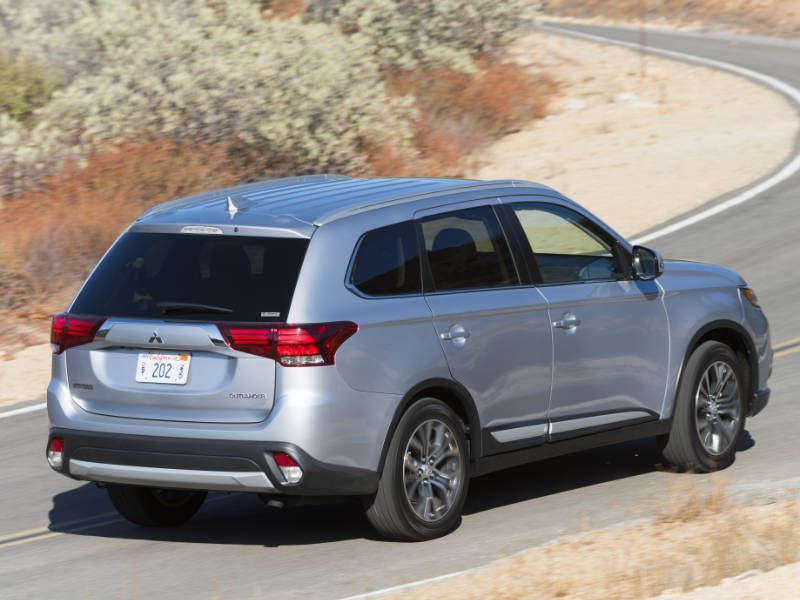
Photo by Mitsubishi
Technology and Safety
Mitsubishi has been making an impressive level of advanced active safety equipment available in Outlander for a while, and the PHEV comes standard with seven airbags, including a driver’s knee airbag; antilock brakes with traction and stability control; hill-start assist; blind-spot monitoring with rear cross-traffic alert; and a lane-change assist. Optional equipment includes adaptive cruise control, forward collision mitigation, automatic high beams and a lane-departure warning.
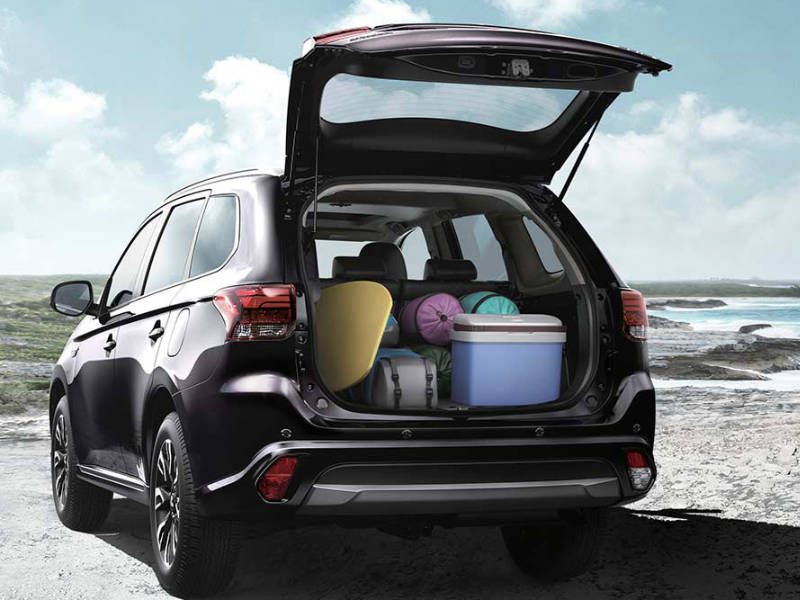
Photo by Mitsubishi
Trim Levels, Prices and Warranties
The 2018 Mitsubishi Outlander PHEV will hit showroom floors in December 2017 in two trim levels: SEL, starting at $34,595; and GT, starting at $40,295. Federal and state tax credits will apply for most buyers; the federal credit, based on battery size, is $5,836.
All Outlanders will carry a fully transferable five-year/60,000-mile limited warranty; a 10-year/100,000-mile powertrain limited warranty; a 10-year/100,000-mile warranty on the PHEV components and main drive battery; a seven-year/100,000-mile anti-corrosion limited warranty; and five years of roadside assistance.
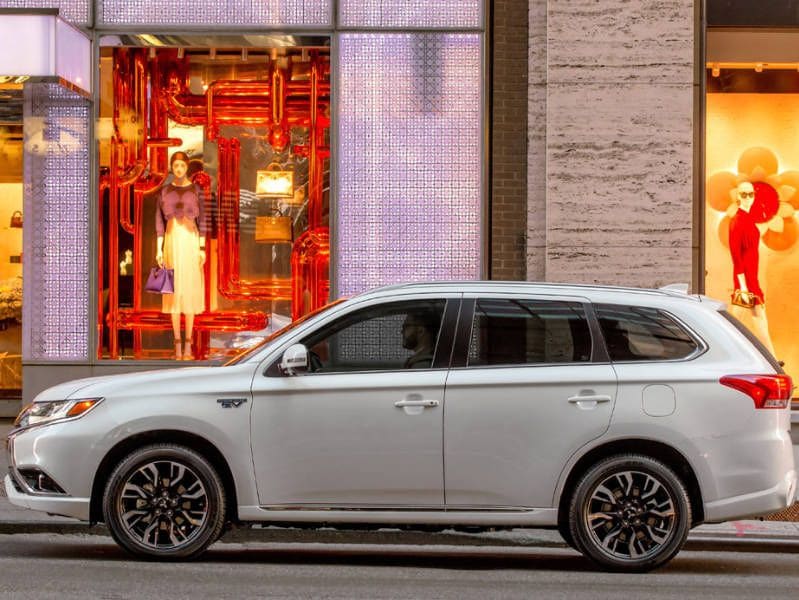
Photo by Mitsubishi
The Competition
As a compact four-wheel drive crossover PHEV, it’s hard to find a direct competitor in Outlander’s price range. The other all-wheel drive PHEV competitors are luxury models like the BMW X5, Volvo XC60, Mercedes-Benz GLE and Porsche Cayenne, and few buyers will be cross-shopping those brands against a Mitsubishi.
Consumers might compare with the Chrysler Pacifica PHEV minivan; Chevrolet Volt hatchback; Ford C-Max wagon; or Ford Fusion, Hyundai Sonata or Kia Optima mid-size sedans, but none of those are crossovers like the Outlander. And while there's a new PHEV version of the MINI Countryman, that's a significantly smaller, less spacious vehicle.
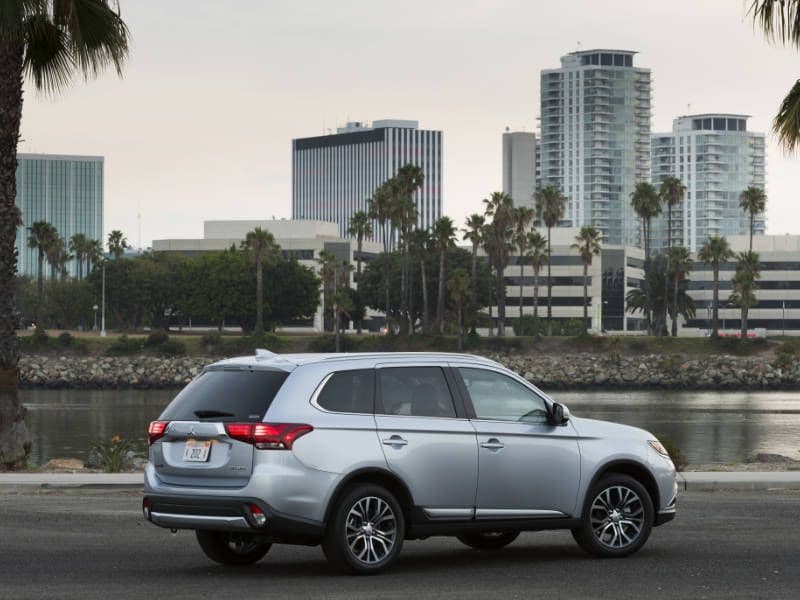
Photo by Mitsubishi
The Business
Once again, we must consider the Mitsubishi business situation before we can recommend a buying decision. Once seen as likely to pull out of the American market, Mitsubishi has been improving its sales volume in each of the last four years, which is good news for the company and for potential buyers.
The challenge is that the dealer body is just 360-strong in the U.S., so buyers should explore how close their local dealership and service center is to home and work. It would also be wise to visit the dealer and get a feel for how committed they are to the brand. Even with the tax credit and cost-saving PHEV operation, Outlander is not a cheap CUV, and you’ll want to make sure that your ownership experience will be commensurate with your purchase price.

Photo by Mitsubishi